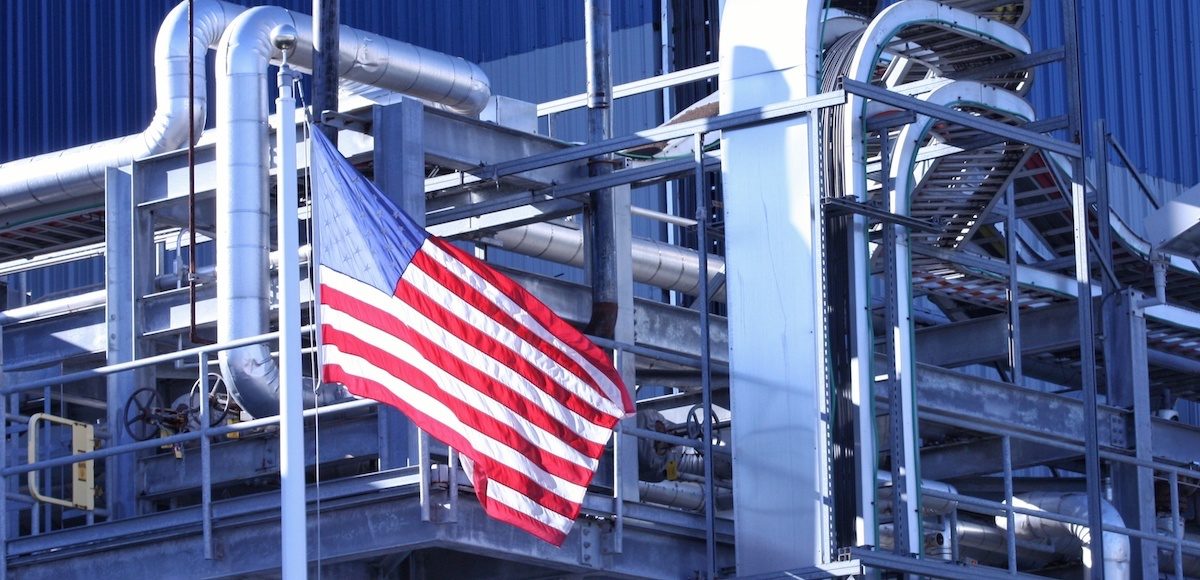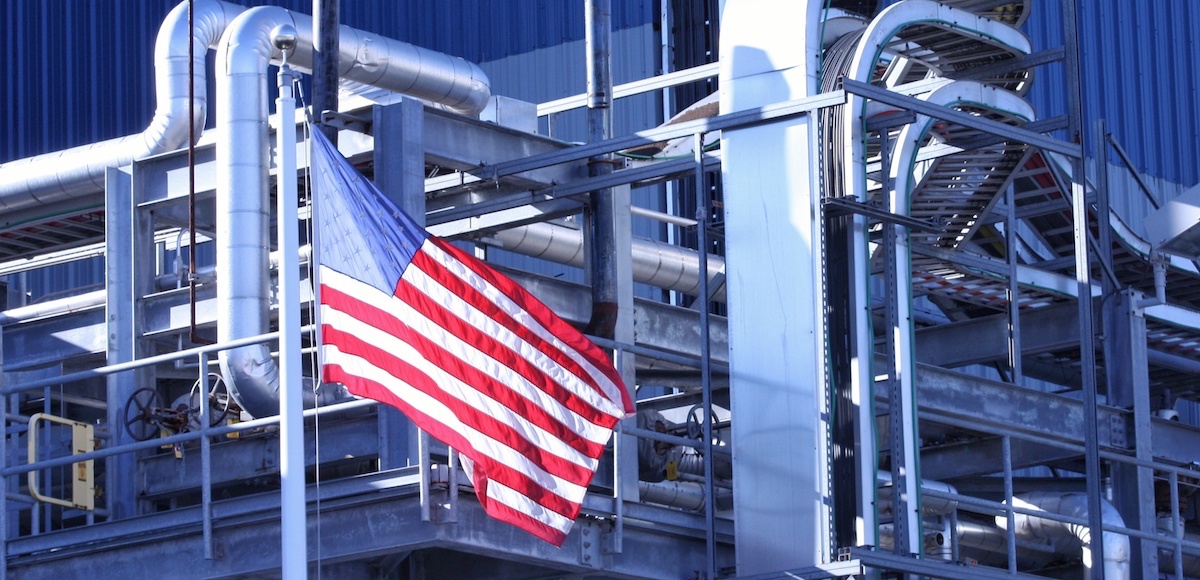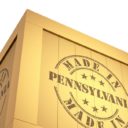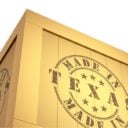

An American Flag flying in front of a U.S. manufacturing factory. (Photo: AdobeStock)
The Institute for Supply Management (ISM) PMI Manufacturing Index (PMI) grew for the 110th consecutive month, rising from an already strong 58.7 to 60.2. The reading for June easily beat the 58.5 consensus forecast.
“Comments from the panel reflect continued expanding business strength,” Timothy R. Fiore, Chair of the ISM Manufacturing Business Survey Committee. “Demand remains strong, with the New Orders Index at 60 percent or above for the 14th straight month, and the Customers’ Inventories Index remaining low.”
The New Orders Index registered 63.5%, a tiny decline of of 0.2% from the May reading of 63.7%. The Production Index registered 62.3%, a 0.8% increase compared to the May reading of 61.5%. The Employment Index registered 56%, a decrease of 0.3% from the May reading of 56.3%.
The Supplier Deliveries Index registered 68.2%, an increase of 6.2% from the May reading of 62%. The Inventories Index registered 50.8%, an increase of 0.6% from the May reading of 50.2%.
The Prices Index registered 76.8% in June, a decline of 2.7% from the May reading of 79.5%, indicating higher raw materials prices for the 28th consecutive month.
“Demand remains robust, but the nation’s employment resources and supply chains continue to struggle,” Mr. Fiore. “Respondents are overwhelmingly concerned about how tariff related activity is and will continue to affect their business.”
No industry reported a decrease in June compared to May.
Panel Respondent Comments
- “Business is strong in all regions. Materials are tight. Trucking continues to be a major challenge.” (Chemical Products)
- “Strong economic growth continues to put pressure/strain on capacity, lead time, availability and pricing across a broadening array of commodities and components.” (Computer & Electronic Products)
- “U.S. tariff policy and lack of predictability, along with [the] threat of trade wars, [is a] causing general business instability and [is] drag on growth for investments.” (Electrical Equipment, Appliances & Components)
- “Electronic component supply issues continue to disrupt production.” (Transportation Equipment)
- “We export to more than 100 countries. We are preparing to shift some customer responsibilities among manufacturing plants and business units due to trade issues (for example, we’ll shift production for China market from the U.S. to our Canadian plant to avoid higher tariffs). Within our company, there is a sense of uncertainty due to potential trade wars.” (Food, Beverage & Tobacco Products)
- “The Section 232 steel tariffs are now impacting domestic steel prices and capacity. Base steel prices have already increased 20 percent since March.” (Fabricated Metal Products)
- “Transportation costs are going through the roof right now, which definitely impacts the decisions we’re making with regard to quantities we’re bringing in versus truckload and LTL.” (Furniture & Related Products)
- “The economy and product demand still continue to be strong. Having trouble finding people [to fill] blue collar positions. Lead times for parts and materials are moving out, and we are seeing commodity cost pressures increases with the threat of tariffs. Additionally, suppliers are asking for more price increases.” (Machinery)
- “The uncertainty of U.S. tariffs and the Canada/Mexico/E.U. retaliatory tariffs continues to cloud strategic planning efforts. Contingency planning (for tariffs) is consuming large amounts of manpower that could be used for more productive projects. The tariffs are improving margins in our raw material businesses; however, our businesses which are further up the supply chain are seeing significant inflation.” (Miscellaneous Manufacturing)
- “The steel tariffs continue to drive uncertainty. Projects and services using steel have limited days that prices are good for. Trucking is tight, requiring advanced planning and increasing costs.” (Paper Products)





